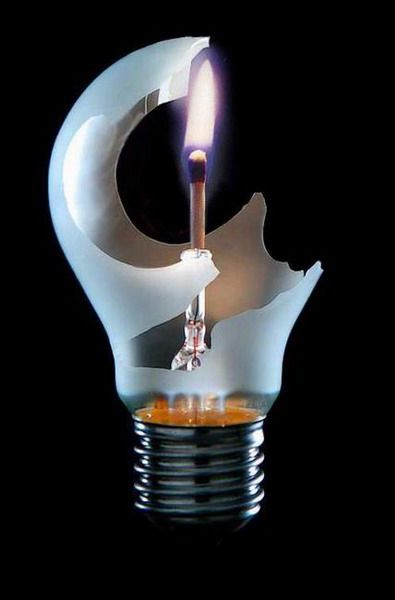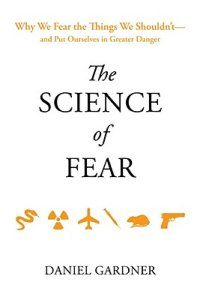Guest Post: Can Creativity Be Measured in a Laboratory?
Aug5

Scientists are becoming more interested in trying to pinpoint precisely what’s going on inside our brains while we’re engaged in creative thinking. Which brain chemicals play a role? Which areas of the brain are firing? Is the magic of creativity linked to one specific brain structure? The answers are not entirely clear. But thanks to brain scan technology, some interesting discoveries are emerging. ScriptPhD.com was founded and focused on the creative applications of science and technology in entertainment, media and advertising, fields traditionally defined by “right brain” propensity. It stands to reason, then, that we would be fascinated by the very technology and science that as attempting to deduce and quantify what, exactly, makes for creativity. To help us in this endeavor, we are pleased to welcome computer scientist and writer Ravi Singh’s guest post to ScriptPhD.com. For his complete article, please click “continue reading.”
Comic-Con 2010: Day 4
Jul1

As Comic-Con winds down on the shortened Day 4, we conclude our coverage with two panels that exemplify what Comic-Con is all about. As promised, we dissect the “Comics Design” panel of the world’s top logo designers deconstructing their work, coupled with images of their work. We also bring you an interesting panel of ethnographers, consisting of undergraduate and graduate student, studying the culture and the varying forces that shape Comic-Con. Seriously, they’re studying nerds! Finally, we are delighted to shine our ScriptPhD.com spotlight on new sci-fi author Charles Yu, who presented his new novel at his first (of what we are sure are many) Comic-Con appearance. We sat down and chatted with Charles, and are pleased to publish the interview. And of course, our Day 4 Costume of the Day. Comic-Con 2010 (through the eyes of ScriptPhD.com) ends under the “continue reading” cut!
Love is a Many-Splendered Algorithm
Feb3

You spot someone across a crowded room. There is eye contact. Your heart beats a little faster, palms are sweaty, you’re light-headed, and your suddenly-squeamish stomach has dropped to your knees. You’re either suffering from an onset of food poisoning or you’re in love. But what does that mean, scientifically, to fall in love, to be in love, to stay in love? In our special Valentine’s Day post, Editor Jovana Grbić expounds on the neuronal and biophysical markers of love, how psychologists and mathematicians have harnessed (and sometimes manipulated) this information to foster 21st Century digital-style romance, and concludes with a personal reflection on what love really means in the face of all of this science. You might just be surprised. So, Cupid, draw back your sword… and click “continue reading” for more!
From the Annals of Psychology: Fear and Loathing in a Modern Age
Dec3

“First of all, let me assert my firm belief that the only thing we have to fear is fear itself—nameless, unreasoning, unjustified terror which paralyzes needed efforts to convert retreat into advance.” These inspiring words, borrowed from scribes Henry David Thoreau and Michel de Montaigne, were spoken by President Franklin Delano Roosevelt at his first inauguration during the only era more perilous than the one we currently face. But FDR had it easy. All he had to face was 25% unemployment and 2 million homeless Americans. We have, among other things, climate change, carcinogens, leaky breast implants, the obesity epidemic, the West Nile virus, SARS, avian/swine flu, flesh-eating disease, pedophiles, predators, herpes, satanic cults, mad cow disease, crack cocaine, and let’s not forget that paragon of Malthusian-like fatalism—terror. In his brilliant book The Science of Fear, journalist Daniel Gardner delves into the psychology and physiology of fear and the incendiary factors that drive it, including media, advertising, government, business and our own evolutionary mold. For our final blog post of 2009, ScriptPhD.com extends the science into a personal reflection, a discussion of why, despite there never having been a better time to be alive, we are more afraid than ever, and how we can turn a more rational leaf in the year 2010.
From the Annals of Psychology: Eternal Sunshine of the Spotless Mind
May2
Original Premise
Who among us hasn’t wanted, nay desperately needed, to forget a painful event, relationship, person, or circumstance that can’t seem to escape their memory? Oh to be able to just wipe it from your brain and pretend it never happened! The concept sounds like something straight out of the imaginative mind of screenwriter Charlie Kaufman. In his movie, Eternal Sunshine of the Spotless Mind, ex-lovers Joel and Clementine, played by Jim Carrey and Kate Winslet, erase memories of each other after their relationship sours. To do this, they seek out the bioengineering company Lacuna Inc, whose scruples are more than ambiguous. All’s well that ends well for the lovers, as they reconnect towards the end of the movie, rebuild new memories of one another and fall back in love.
Indeed, plenty of recent movies deal with memory loss, of varying degree, origin and consequence. In Christopher Nolan’s brilliant and esoteric Memento, Leonard Shelby (Guy Pearce), suffering from antiretrograde amnesia rendering him unable to form new memories, is trying to piece together the events of the vicious attack and murder of his wife. A similar condition is suffered by Drew Barrymore’s character in the romantic comedy 50 First Dates and has to “meet” her character’s love interest anew every day. In Paycheck, the film adaptation of Philip K. Dick’s science fiction story, Ben Affleck’s character takes extreme measure to protect his clients’ intellectual property, in the form of wiping his own memory, almost costing him his own life as his last deal embroils him in a standoff with the FBI.
Indeed, a slew of medical and psychological syndromes can cause, or is associated with, memory loss. But the idea of selective memory engineering has been the stuff of science fiction fancy.
Until now.
Current Research
While watching an episode of the television version of This American Life, I was struck by the episode entitled “Pandora’s Box”, which profiled the work of SUNY Downstate Medical researchers Drs. Todd Sacktor and Andre Fenton. Dr. Sacktor had a revolutionary idea about how memory is formed in the brain, and the elementary, yet powerful, way to manipulate it by eradicating the function of one regulatory molecule. And what a Pandora’s box did they open! Take a look at this short clip:
Powerful stuff, no? This research, in effect, suggests that a single molecule, Protein Kinase Mzeta, regulates the brain’s ability to form and retain memories, and consequently lies at the heart of memory erasure potential. In a recent New York Times interview, Dr. Sacktor admitted that his scientist dad directed him to a family of molecules called Protein Kinase C in 1985, from which his lab derived PKMzeta as a brain-specific member of that family. In a 1999 paper in the journal Nature Neuroscience, Drs. Jeff Lichtman and Joshua Sanes narrowed down 117 hypothetical molecules involved in long-term potentiation (LTP), the communication between two neurons when stimulated simultaneously. Following this paper, in a subsequent 2002 Nature Neuroscience paper, Dr. Sacktor’s lab was able to isolate PKMzeta as the absolute “it” memory factor, showing that it congregates semi-permanently en masse around these activated neuronal connections. At that point, he was off to the races. He joined forces with the friendly neighbor downstairs, neuroscientist Dr. Andre Fenton, who just happened to study spatial memory in mice and rats. He had previously shown that mice and rats placed in a circular chamber learn how to move around to avoid getting their feet shocked, a memory they retain, days, weeks, even months later. Sacktor’s lab injected an inhibitor for PKMzeta into the rats’ hippocampus, the part of our brain that regulates memory. The results were stunning. Two pioneering papers (paper 1 and paper 2) in the elite research journal Science showed that these “blockers” both reversed the rats’ neurons from forming long-term potentiation, and that it manifested in them forgetting the spatial information they’d learned in the chamber, an effect that seemed to last for weeks. Drs. Sacktor and Fenton had erased the rats’ memory!
Dr. Fenton and Dr. Sacktor’s reaction to their research in the This American Life piece was notable. Normally, scientists are shielded well behind the safe solitude of the ivory tower: long work hours, constant pressure, achieving the next research milestone. It’s not that scientists don’t ever think about the implications of their work per se, but they rarely have the luxury of time for such contemplation or the fortune of far-reaching results. While he read letters from victims of post-traumatic stress disorder, Dr. Fenton broke down crying, and expressed a desire to just help these people.
Less than two months ago, scientists at the Toronto’s Hospital for Sick Children [sorry I can’t help myself… as opposed to healthy ones? I love Canadians!] have added an important piece to this canon of research. In a Science paper, the scientists identified the exact group of neurons—lateral amygdala (LA) neurons with increased cyclic adenosine monophosphate response element-binding protein (CREB)—responsible for formation of a given memory (the neuronal memory trace). Selective targeting and deletion of these neurons using an injectable, inducible neurotoxin blocked all learned memories.
Eventually, of course, all of this body of science will coalesce into a more coherent picture of how memories are formed, what subsets of neurons in which portions of the brain store them, and what molecules and proteins we can manipulate to control, enhance or erase memory altogether. But that still leaves us to grapple with some very powerful and comprehensive bioethical dilemmas. Assuming that this translates into a medical procedure or pharmaceutical treatment for memory manipulation, who will regulate it? How will rules be established to regulate how far to take this therapy? Is memory erasure the equivalent of altering our personalities, the essence of who we are, a psychological lobotomy? Most importantly, however, is the question of how much we need memories, even painful, negative ones, to build the cornerstones of human morality, empathy, and the absolute meaning of right and wrong.
Sheena Jocelyn, one of the researchers involved in the University of Toronto study, acknowledged the bifurcated ethical implications of the research: “Our experiences, both good and bad, teach us things,” she said. “If we didn’t remember that the last time we touched a hot stove we got burned, we would be more likely to do it again. So in this sense, even memories of bad or frightening experiences are useful. However, there are some cases in which fearful memories become maladaptive, such as with post-traumatic stress disorder or severe phobia. Selectively erasing these intrusive memories may improve the lives of afflicted individuals.” In fact, Anjan Chatterjee, M.D., a neuroethicist at the University of Pennsylvania Ethics Center, penned an incredibly prescient piece two years ago that equated psychological mitigation of painful memories to “cosmetic neurology”. “If, as many religions and philosophies argue, struggle and even pain are important to the development of character,” Dr. Chatterje asks, “Does the use of pharmacological interventions to ameliorate our struggles undermine this essential process?”
To shed some light of this ethical quandary, ScriptPhD.com enlisted the help of Mary Devereaux, PhD, a bioethics expert at The Center for Ethics in Science and Technology in San Diego, CA and Peter Wagner, MD, a professor in the Schools of Medicine and Bioengineering at UCSD.
To continue reading these enlightening interviews, click “Continue Reading”…

















